It’s hard to evaluate how well your B2B SaaS is doing if you don’t understand how to read and evaluate some key metrics—but that can be difficult to do.
Being able to understand and track B2B SaaS metrics helps you do things like:
- Measure and track key performance indicators (KPIs)
- Identify issues and opportunities within your market
- Benchmark your performance over a specific period of time
There are a ton of B2B SaaS metrics out there that’ll help your business, but it can be hard to evaluate which one is the best.
In this article, I went ahead and picked the 10 most important metrics to understand and evaluate for a B2B SaaS business.
Without further ado, let’s get right into it.
10 Key Metrics in B2B SaaS
- Churn rate: The percentage of customers who cancel their subscription in a given period of time.
- Monthly recurring revenue (MRR): The total recurring revenue generated each month from subscriptions.
- Revenue churn: The percentage of revenue lost from customer churn in a given period of time.
- Annual recurring revenue (ARR): The total recurring revenue generated each year from subscriptions.
- Committed monthly recurring revenue (CMRR): The total recurring revenue that is contractually committed to in the future.
- Customer acquisition cost (CAC): The average cost of acquiring a new customer.
- Customer lifetime value (CLV): The average revenue generated from a customer over the entire course of their relationship with the company.
- Lead velocity rate (LVR): The number of new leads generated in a given period of time.
- Net promoter score (NPS): A measure of customer satisfaction and loyalty.
- Customer engagement score (CES): A measure of how active and engaged customers are with the product or service.
What is B2B SaaS?
B2B SaaS is a business model where software is hosted in the cloud and delivered to customers over the internet on a subscription basis.
This means that instead of buying and installing software on your own servers, you can access it through a web browser or mobile app.
B2B SaaS applications offer a wide range of solutions for businesses, from customer relationship management (CRM) and enterprise resource planning (ERP) to marketing automation and collaboration software.
The beauty of B2B SaaS is that it eliminates the need for costly installations and maintenance, allowing you to focus on running your business.
Plus, with a subscription-based model, you have the flexibility to scale your usage up or down as needed.
What are B2B SaaS Metrics?
B2B SaaS metrics, also known as key performance indicators (KPIs), are crucial measurements that gauge the success of a B2B SaaS company by tracking growth, identifying areas for improvement, and facilitating informed business decisions.
These metrics provide valuable insights into the company’s performance and are essential for evaluating its subscription-based business model.
Here are some important B2B SaaS metrics that you should pay attention to:
- Annual recurring revenue (ARR): Measures the total revenue you can expect to generate from subscriptions in a year.
- Customer lifetime value (CLV): Measures the total revenue you can expect to generate from a customer over their entire relationship with your company.
- Customer acquisition cost (CAC): Measures the cost of acquiring a new customer.
- Churn rate: Measures the percentage of customers who cancel their subscription.
- Net promoter score (NPS): Measures customer loyalty and satisfaction.
These types of metrics are also considered marketing metrics or sales metrics as they help both your sales and marketing efforts
How Can Understanding B2B SaaS Help You?
Understanding B2B SaaS can benefit you by providing valuable insights into your business and enabling you to make data-driven decisions.
By tracking and analyzing B2B SaaS metrics, you can gain a deeper understanding of your customers and their behavior, which in turn helps you improve customer satisfaction and increase customer lifetime value.
Additionally, understanding B2B SaaS allows you to choose the right applications for your business, ensuring that you are using the tools that will best meet your needs.
Implementing these applications effectively is also crucial, and by understanding B2B SaaS, you can ensure a smooth and successful implementation process.
Finally, understanding B2B SaaS helps you get the most out of your investment, as you can leverage the applications to improve your business processes and achieve your goals.
Below is a brief breakdown of some benefits of understanding B2B SaaS:
| Benefit | Description |
|---|---|
| Informed decisions | Understand where to allocate resources, improve customer satisfaction, and grow revenue. |
| Right applications | Evaluate and choose the B2B SaaS applications that meet your specific needs. |
| Effective implementation | Ensure proper deployment and usage of chosen B2B SaaS applications. |
| Maximize investment | Use B2B SaaS applications to improve business processes and achieve goals. |
10 B2B Metrics for Your SaaS
When it comes to measuring the success of your B2B SaaS business, there are several key metrics that you need to know.
Some of these metrics include:
- Churn rate
- Monthly recurring revenue (MRR)
- Revenue churn
- Annual recurring revenue (ARR)
- Committed monthly recurring revenue (CMRR)
Moreover, let’s break down all 10 of the most important metrics you need to start understanding to improve your B2B SaaS.
Churn Rate
Churn rate measures the percentage of customers who stop using a B2B SaaS product or service over a specific period of time.
Churn rate is used in B2B SaaS businesses to understand the health of the company and identify areas for improvement.
By calculating the churn rate, businesses can make informed decisions to reduce customer churn and improve customer satisfaction and loyalty. It helps businesses address customer concerns and enhance the overall customer experience.
Knowing the churn rate can also help businesses save costs by minimizing the need to acquire new customers. It can lead to increased revenue and profitability as more customers continue to actively use and pay for the product or service.
How to Calculate Churn Rate
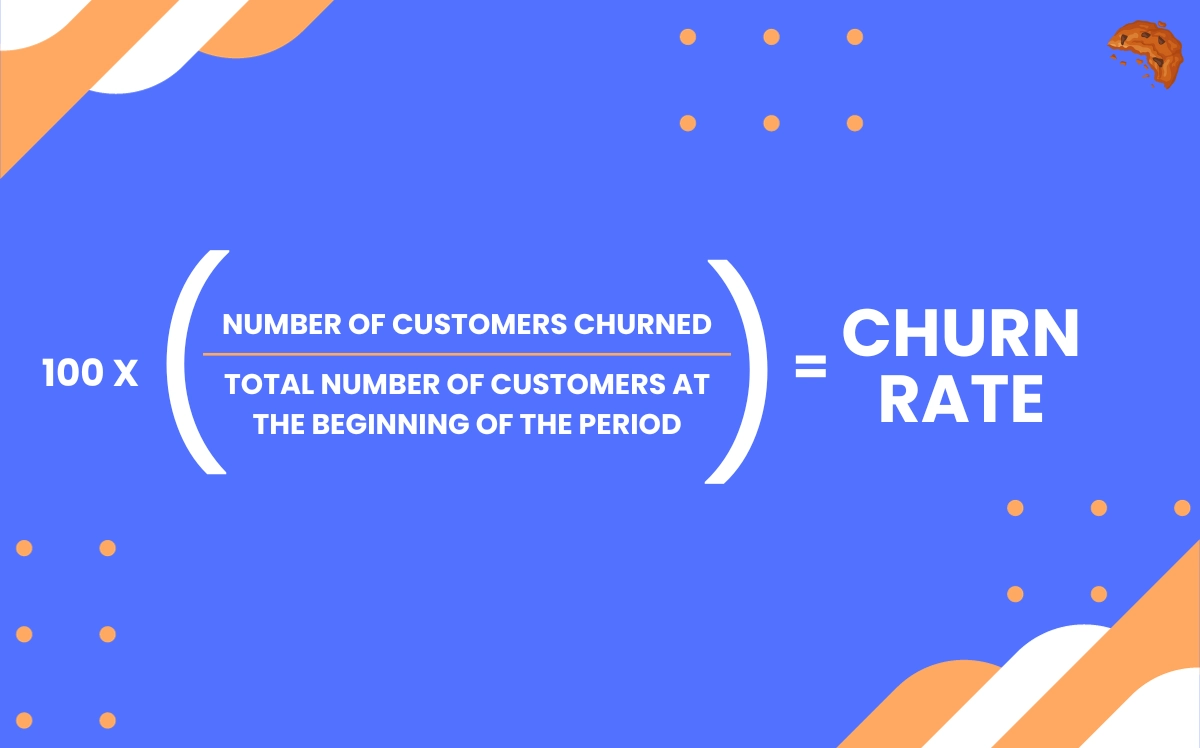
To calculate the churn rate, the formula is:
(Number of customers churned / Total number of customers at the beginning of the period) * 100.
By tracking the churn rate on a regular basis, businesses can identify trends and make necessary adjustments to their product or service.
In short, businesses can stay proactive and stay ahead of the game by monitoring the churn rate closely.
Monthly Recurring Revenue (MRR)
Monthly Recurring Revenue (MRR) is a measure of the predictable recurring revenue generated from customers on a monthly basis in a B2B SaaS business.
MRR is used to understand the monthly recurring revenue and plan for future growth in a B2B SaaS business.
It helps in forecasting revenue for future months and years, allowing businesses to plan their budget and make informed decisions about investments and hiring.
Additionally, knowing MRR can help identify growth trends and patterns, enabling businesses to make strategic decisions about marketing and sales strategies.
Benchmarking MRR against other businesses in the same industry can also help identify areas for improvement and necessary adjustments.
By knowing the MRR, businesses can gain valuable insights into their revenue performance and make informed decisions about the future of their B2B SaaS business.
It helps in understanding the health and stability of the business and provides a basis for strategic planning.
How to Calculate Monthly Recurring Revenue (MRR)
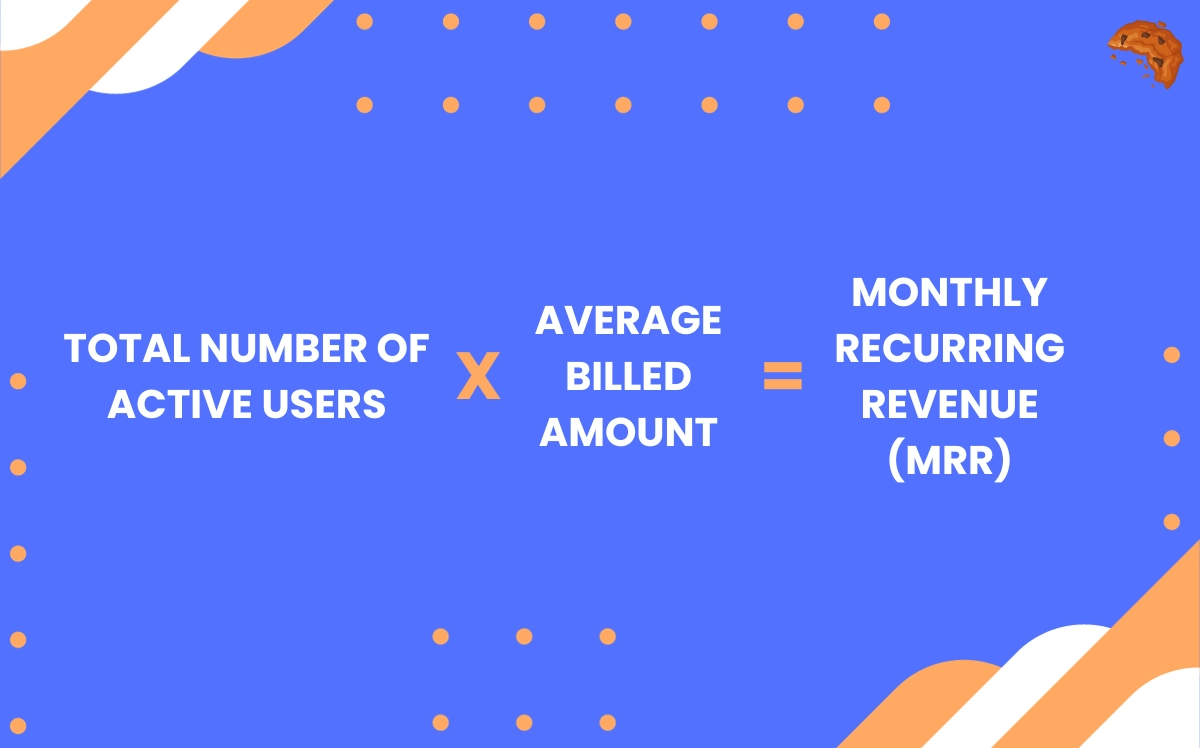
To calculate MRR, add up the monthly subscription fees from all active customers, as well as any other recurring revenue sources such as add-on fees or maintenance contracts.
Simple Formula: Total number of active users x average billed amount = Monthly recurring revenue (MRR)
This total represents the predictable recurring revenue generated on a monthly basis.
Regularly tracking and updating this calculation will provide an accurate picture of the revenue stream and allow for effective monitoring and planning.
Revenue Churn
Revenue churn measures the percentage of revenue lost due to customer churn, downgrades, or cancellations.
This metric is used to assess the health and growth of a B2B SaaS business by indicating its ability to retain customers and generate recurring revenue.
A high revenue churn rate can negatively impact the bottom line, leading to lost revenue and increased costs.
By regularly calculating the revenue churn rate, businesses can identify areas for improvement, evaluate the effectiveness of customer retention strategies, and make informed decisions about pricing and product development.
Knowing this B2B SaaS metric can help businesses understand the impact of customer churn on their revenue and profitability.
Moreover, it allows them to identify trends and patterns in customer behavior, such as which customer segments are more likely to churn or which product features are causing downgrades.
This information can help a ton by being used to implement targeted strategies to reduce churn, retain customers, and increase revenue.
How to Calculate Revenue Churn
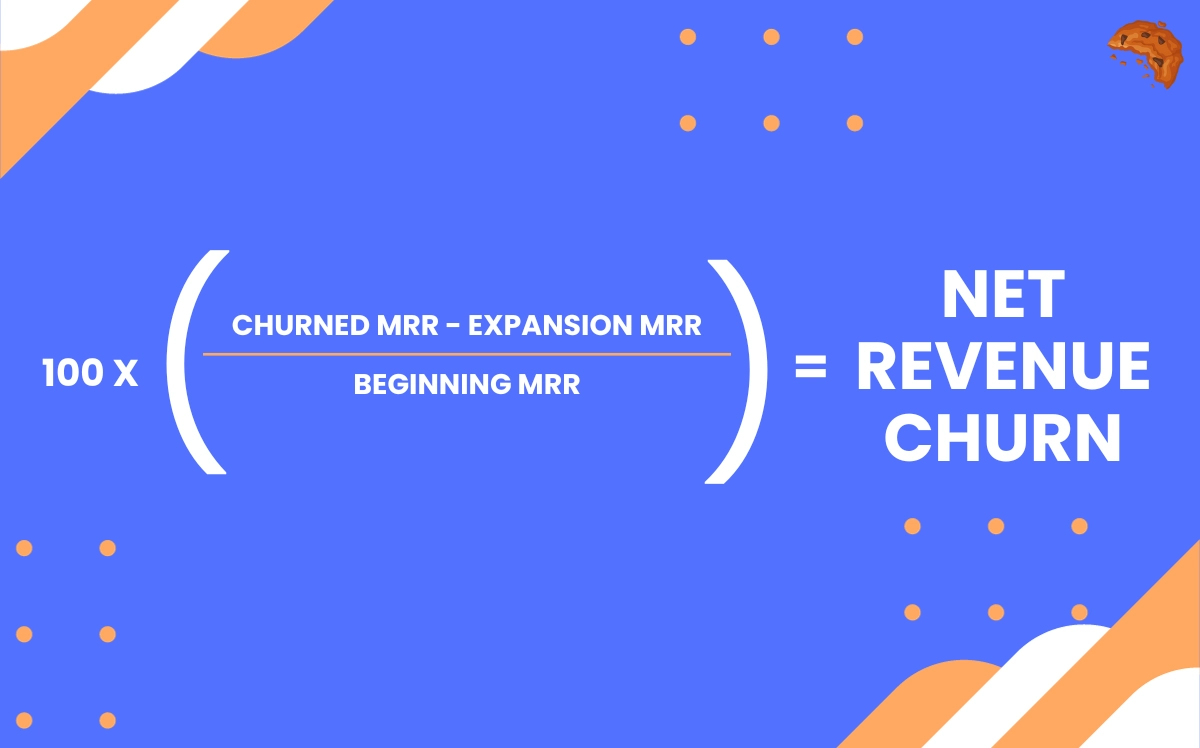
To calculate the revenue churn rate, divide the revenue lost from churned customers, downgrades, or cancellations by the total revenue at the beginning of the period, and multiply by 100.
Simple Formula: 100 x (Churned MRR – Expansion MRR / Beginning MRR) = Revenue Churn
This calculation provides a percentage that represents the proportion of revenue lost due to churn.
Regularly tracking this metric over time can help businesses measure the effectiveness of their efforts to reduce churn and improve customer retention.
Annual Recurring Revenue (ARR)
Annual Recurring Revenue (ARR) measures the total amount of recurring revenue that a business expects to generate over a one-year period.
ARR is used in B2B SaaS businesses to understand the growth and stability of the company. It provides a predictable revenue stream and helps measure the long-term growth of the business.
Investors also use ARR to value SaaS businesses, making it important to keep track of this metric.
Knowing your ARR can help you forecast revenue for future years, allowing you to plan your budget and make informed decisions about investments and hiring.
It also helps identify growth trends and patterns, enabling you to adjust marketing and sales strategies accordingly.
Additionally, ARR can be used to benchmark performance against other businesses in the industry, providing insights into areas for improvement.
How to Calculate Annual Recurring Revenue (ARR)
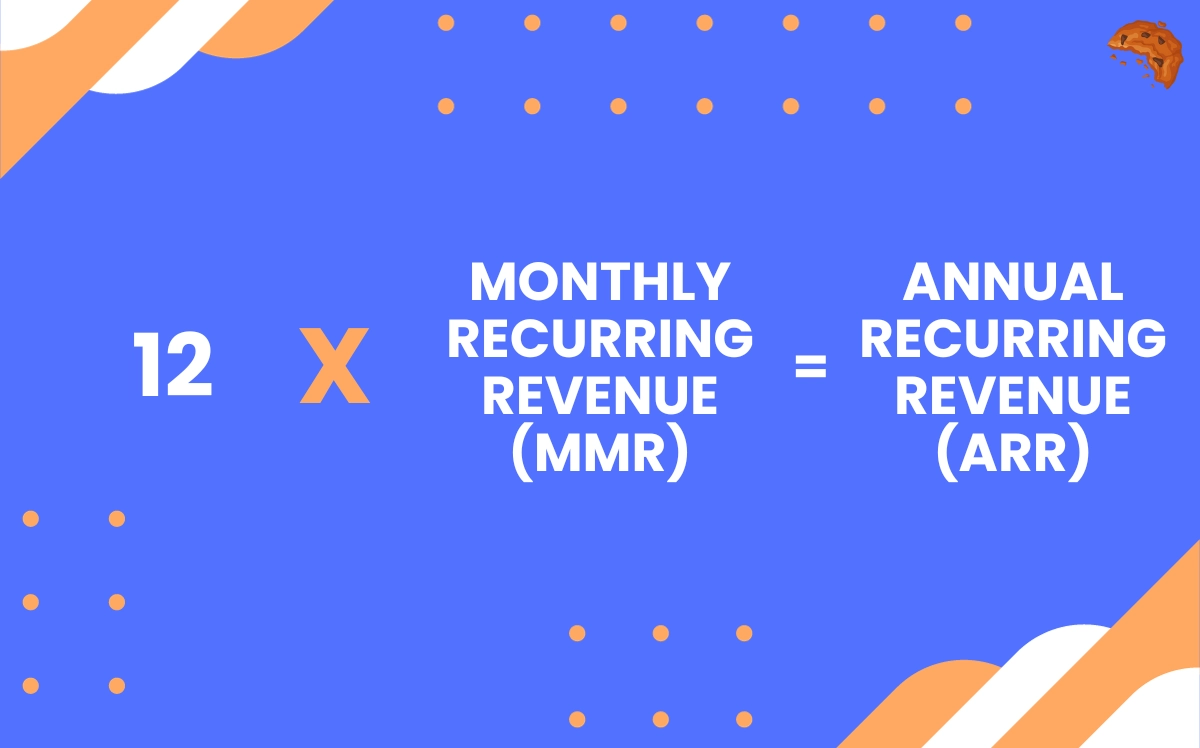
To calculate ARR, add up the recurring revenue from all customers over a one-year period.
Simple Formula: 12 x Monthly recurring revenue (MRR) = Annual Recurring Revenue (ARR)
This includes subscription fees or any other regular payments.
Annual recurring revenue excludes one-time or non-recurring revenue.
Committed Monthly Recurring Revenue (CMRR)
Committed monthly recurring revenue (CMRR) is a B2B SaaS metric that measures the total amount of recurring revenue a business expects to generate from customers over the next 12 months, considering new bookings, upgrades, downgrades, and churn.
CMRR is used in B2B SaaS businesses to gain insights into the stability and growth potential of the business.
By calculating CMRR, businesses can:
- Forecast their future revenue
- Identify growth trends
- Benchmark their performance against industry peers
- Make informed decisions about investments and hiring
- Adjust marketing and sales strategies
- Compare performance with other businesses in the industry
- Inform strategic decisions such as launching new products or services, entering new markets, or making acquisitions.
Knowing CMRR can help businesses in several ways. It allows them to:
- Plan their budget effectively
- Make informed decisions about investments and hiring
- Identify growth patterns
- Adjust marketing and sales strategies accordingly
- Compare their performance with industry peers
- Identify areas for improvement
- Gain insights into the potential success of strategic decisions such as launching new products or services, entering new markets, or making acquisitions.
How to Calculate Committed Monthly Recurring Revenue (CMRR)

To calculate CMRR, simply add up the monthly recurring revenue from all customers with active contracts and multiply that number by 12.
Simple Formula: Beginning CMRR + New Booking CMRR + Expansion CMRR – Churned CMRR=Committed Monthly Recurring Revenue (CMRR)
Customer Acquisition Cost (CAC)
Customer Acquisition Cost (CAC) measures the total cost of acquiring a new customer for a business.
CAC is used in B2B SaaS businesses to understand how much is being spent on acquiring new customers and to optimize marketing and sales efforts.
By lowering CAC, businesses can spend less money to acquire new customers, resulting in higher profitability.
Knowing the CAC helps identify areas for improvement in marketing and sales efforts, such as targeting the right audience or making marketing messages more effective.
It also helps make informed decisions about marketing and sales spending, allowing for more effective allocation of budgets to channels or campaigns that have proven to be successful in acquiring new customers.
Tracking CAC over time allows for the measurement of effectiveness in marketing and sales campaigns (and your sales team in general), enabling adjustments to be made as needed.
By analyzing trends and patterns in CAC, businesses can identify the strategies and tactics that yield the best results and focus efforts on them.
How to Calculate Customer Acquisition Cost (CAC)
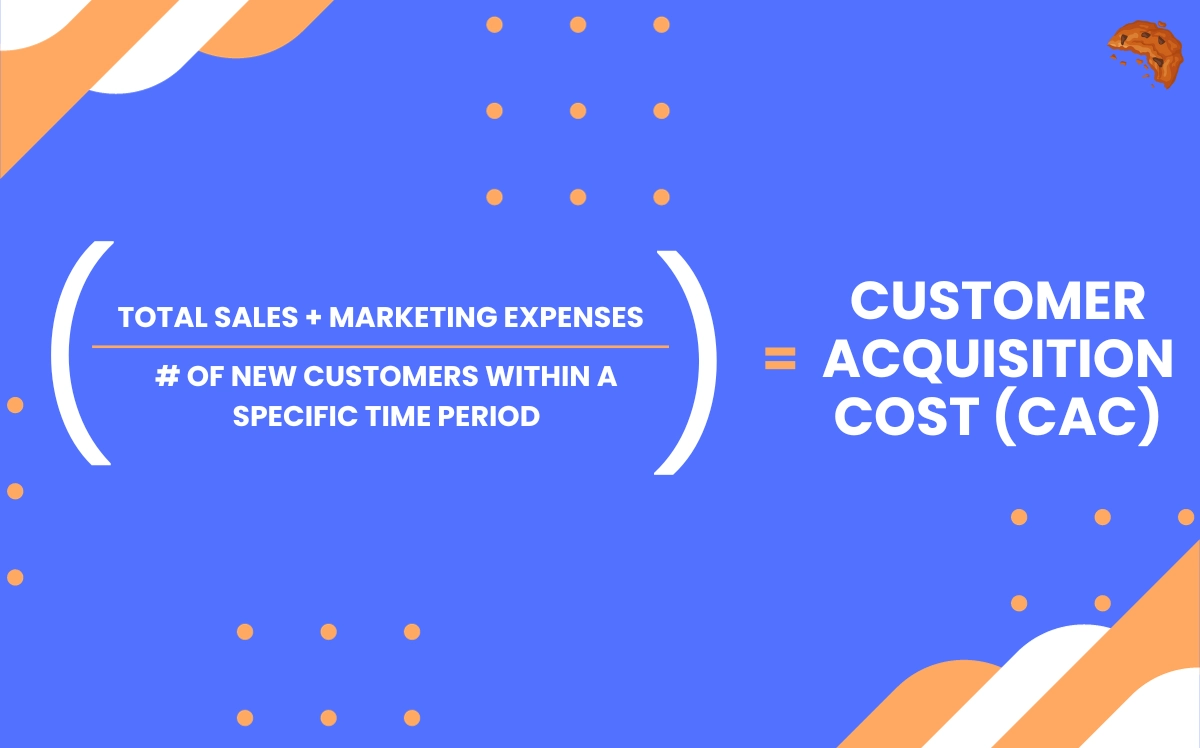
To calculate CAC, you need to divide the total cost of acquiring customers (including marketing and sales expenses) by the number of customers acquired within a specific time period.
Simple Foruma: Total sales + marketing expenses / number of new customers within a specific time period = Customer Acquisition Cost (CAC)
In short, customer acquisition cost provides insight into the cost-effectiveness of customer acquisition efforts.
Customer Lifetime Value (CLV)
Customer lifetime value (CLV) is a metric that measures the total revenue you can expect to generate from a customer over the entire duration of your relationship.
It’s used in B2B SaaS businesses to understand the value each customer brings and make informed decisions about marketing, sales, and customer retention strategies.
By tracking CLV, businesses can identify their most valuable customers and target them with special offers and exceptional customer service.
It also helps in allocating marketing and sales budget wisely by investing more in acquiring customers with a high CLV, ensuring a better return on investment.
Additionally, tracking CLV over time allows businesses to measure the effectiveness of their customer retention strategies and make adjustments to improve customer retention and maximize the value they bring.
How to Calculate Customer Lifetime Value (CLV)
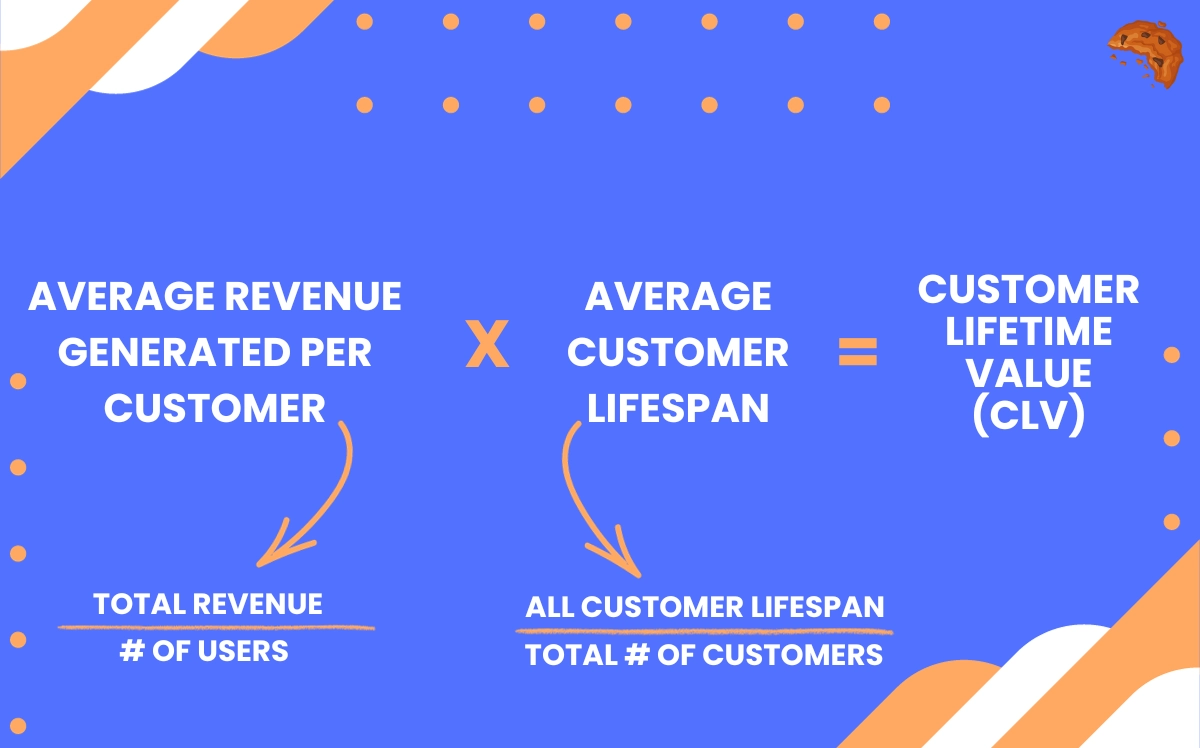
The calculation of CLV involves determining the average revenue generated per customer and multiplying it by the average customer lifespan.
Simple Formula: Average revenue generated per customer x average customer lifespan = Customer Lifetime Value (CLV)
This metric is crucial for B2B SaaS businesses as it helps identify valuable customers, make informed spending decisions, and measure the effectiveness of customer retention strategies, ultimately leading to business growth.
Lead Velocity Rate (LVR)
The B2B SaaS metric, Lead Velocity Rate (LVR), measures the rate at which a business generates qualified leads over time.
LVR is used to understand the effectiveness of lead generation efforts and make informed decisions about marketing and sales strategies.
It helps identify areas for improvement in lead generation campaigns and allows for adjustments to be made to optimize the lead generation process.
Knowing the LVR enables businesses to make informed decisions about their marketing and sales budget by understanding which channels or campaigns generate the most qualified leads.
This helps allocate resources effectively and maximize return on investment.
LVR also allows for the measurement of the effectiveness of lead-generation campaigns over time.
By comparing LVRs from different periods, businesses can determine if their efforts are improving or if adjustments are needed.
How to Calculate Lead Velocity Rate (LVR)

To calculate LVR, divide the number of qualified leads generated in a given period by the number of qualified leads generated in the previous period, and multiply by 100.
Simple Formula: 100 x ((Current month’s number of qualified leads – last month’s number of qualified leads) / Last month’s number of qualified leads)
This calculation provides insights into lead generation performance and allows for tracking and monitoring on a monthly basis.
Net Promoter Score (NPS)
The Net Promoter Score (NPS) is a B2B SaaS metric used to gauge customer loyalty and satisfaction by measuring how likely customers are to recommend a company or product.
This metric is used to understand customer sentiment and identify areas for improvement, as well as benchmark against competitors.
Additionally, a high NPS indicates satisfied customers who are more likely to promote the business, leading to increased sales and referrals.
Knowing the NPS can help businesses make informed decisions about product development, marketing, and sales strategies.
It provides insights into customer satisfaction and loyalty, allowing businesses to prioritize efforts and allocate resources effectively.
How to Calculate Net Promoter Score (NPS)
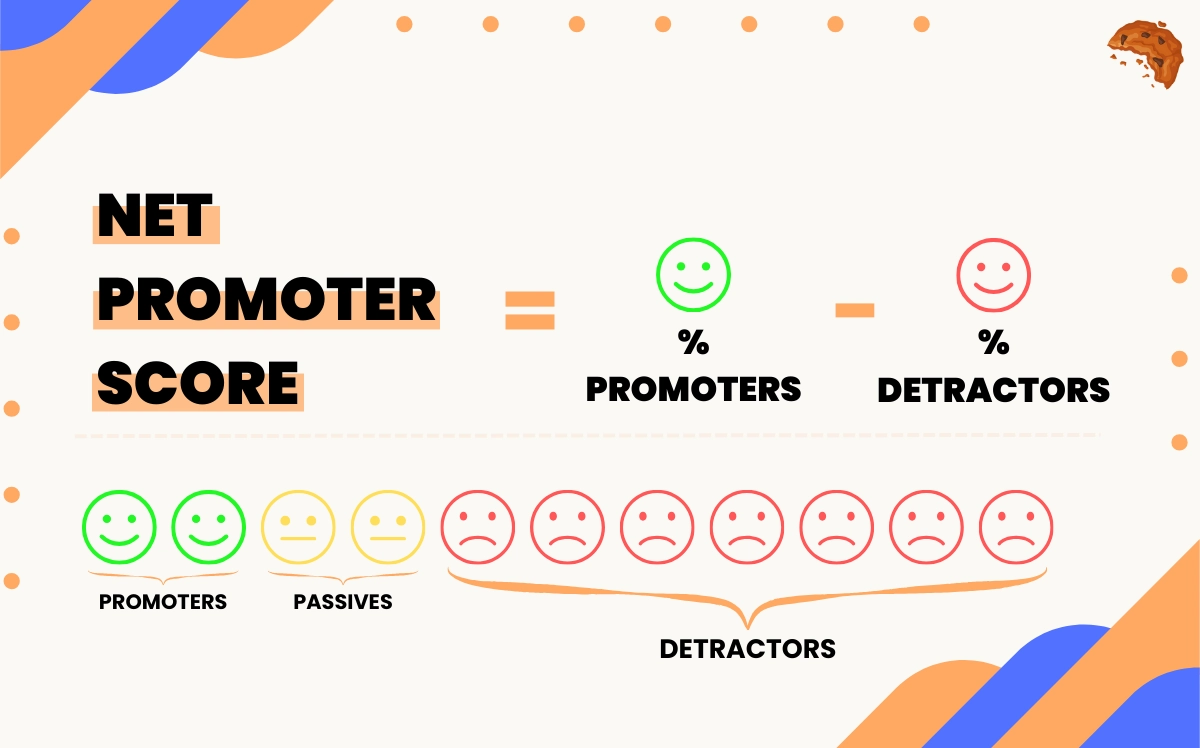
To calculate the NPS, businesses ask customers a simple question: ‘On a scale of 0 to 10, how likely are you to recommend our company/product to others?’
Based on the responses, customers are classified into three categories:
- Promoters (score of 9 or 10)
- Passives (score of 7 or 8)
- Detractors (score of 0 to 6)
The NPS is then calculated by subtracting the percentage of Detractors from the percentage of Promoters.
Simple Formula: Percentage of Promoters – Percentage of Detractors = Net Promoter Score (NPS)
Customer Engagement Score (CES)
Customer Engagement Score (CES) is a measurement of how engaged customers are with a company’s product or service.
This metric is used to understand the level of customer engagement and identify areas for improvement.
By tracking interactions such as product usage, feature adoption, customer support interactions, and feedback, companies can calculate their CES and gain insights into customer satisfaction and loyalty.
Knowing this metric can help businesses make informed decisions about product development, marketing, and sales.
It allows them to understand how engaged their customers are and take steps to increase customer satisfaction and loyalty.
How to Calculate Customer Engagement Score (CES)
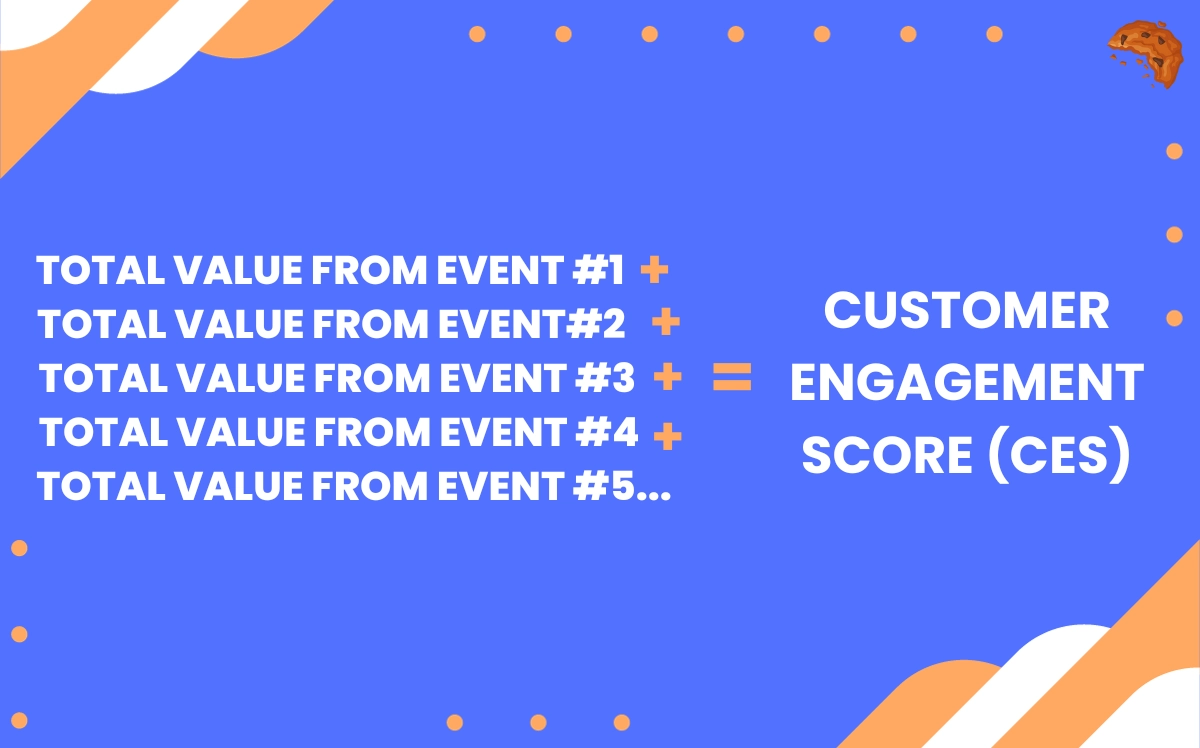
To calculate the CES, companies track various factors and assign weights to each based on their importance.
These factors may include the following:
- Customer interactions
- Product usage
- Feedback
The weights are then multiplied by the corresponding factor values and summed up to obtain the overall CES score.
Simple Formula: Weight of random event + Number of occurrences of a random event = Customer Engagement Score (CES)
Conclusion
Like all businesses know, being able to understand key metrics is only going to help them in the long run.
From customer acquisition cost to churn rate, each metric provides valuable insights into your business’s performance—helping you identify areas for improvement—and helps you benchmark against competitors.
Think of each metric as one brick that makes up a brick house. Without utilizing all the metrics in conjunction, you’re not going to have a standing house—it requires looking at metrics holistically.
So go ahead, start implementing these metrics in your strategy—tracking them over time, analyzing trends, setting goals—and watch your business only become better within the competitive landscape of SaaS.
Leave a Reply